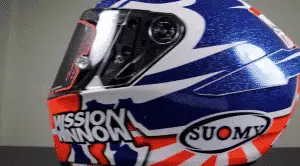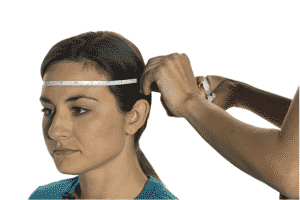Selecting the finest motorcycle helmet is essential, whether you’re cycling, preparing for your initial football game, donning a helmet for a motorcycle ride, or engaging in a game of softball, as it offers protection. However, a helmet provides optimum protection only if it properly fits you. While measuring the circumference of your head is a commonly used method to determine size, nothing beats the accuracy of a fitting session conducted with the assistance of a store employee or on your own.
Whether you’re bicycling, playing softball, riding a motorcycle, or gearing up for your first football game, wearing a helmet can help protect you from traumatic brain injuries. But your helmet is only effective protection if it fits you correctly. The most common way of determining helmet size is measuring your head circumference, but nothing replaces a fitting session done on your own or with a store clerk’s help.

How to Measure Helmet Size
Part 1: Assessing Your Mind’s Circumference

1 Ascertain helmet shape. You ought to consider helmet shape before measuring for helmet size. That is particularly important when you’re looking for a motorcycle helmet. There are 3 types of contours, which might be intermediate oblong, long oblong, and round oval. The helmet silhouette matters for types that are helmet, though it really is important for riding and motorcycle helmets.
- Long oval means that the design of the mind, and helmet, will be longer front to back than simply side-by-side.
- Intermediate oval means that the form of this helmet will be slightly longer from front to back than from side-to-side. This could be the shape.
- A round oval shape is the one which is nearly equal from front to back because it’s side to side.
2. Wrap the flexible measuring tape around your mind. You ought to position it just above your eyebrows. Make sure that the measuring tape lays flat but does not pinch. It should be level all the way around.
- Doing so on your own is Challenging. Ask a good friend or relative for assistance, or use a mirror to help you measure the tape.
- If you’re measuring your face circumference on your own, cross the ends of the tape onto the front of your head to create reading the dimension easier.
3. Read the dimension off the tape. Take a few measurements. The measurement you choose may be the dimension to pass by. Jot this down dimension so that you will remember it if it comes to selecting a helmet
Part 2: Attempting to a Helmet
1. Determine the style. The sort of helmet you choose depends upon what you desire it for. Every kind of helmet is designed to resist forces and the types of impact unique to that sport. By way of instance, don’t wear a helmet onto your own motorcycle, or a bicycle helmet for scaling. In some instances, there can be kinds of the helmet for a single game, like biking.
- A mountain bike helmet has been made specifically for off-road terrain.
- A road helmet is lightweight and streamlined to aerodynamic benefits.
- A BMX bike helmet is made to fit the demands of BMX racing.
- A leisure helmet is a helmet manufactured without more sophisticated attributes.
2. Choose a helmet intended to fit your face circumference. Most helmets are made to fit a range of head circumference measurements. Helmet manufacturers set that the mind circumference onto the packaging that is a helmet. You may observe a size designation–small, medium, or large that correlates with a sizing chart that lists head dimensions.
3. Test the helmet. Attempt the helmet before purchasing to be sure it fits correctly. The helmet should pay for the back of one’s mind and both your forehead. If you put on it and shake your head back and front or side to side, then the helmet shouldn’t sew in direction. Of course, if someone places their hands in addition to the helmet and spins it, your face is going along with the helmet. In the event your face is twisted in by the helmet, it’s too loose.
Part 3: Checking Before Use
1. Adjust the chin strap of the helmet. If the helmet demands a chin strap, assess it. It will fit snugly, but maybe not pinch. The chinstrap shouldn’t confine your ability to speak, swallow, or breathe. It must not, but be really loose that you may easily fit a finger between your chin and the strap.
2. Take to extra cushioning. Many helmets come with removable padding that can be cleaned after usage to maintain them more hygienic. It is also an option to buy additional padding to grow the helmet. You need to only buy extra padding in the event that you can’t look for correctly and a helmet that fits you snugly.
3. Inspect before use. Assess the helmet or have it inspected before each usage. The helmet should not be cracked, causing memory foam, or damaged at all. If the helmet has been damaged, then don’t use it. As an alternative, return it to the store or send it back.
If you must return the helmet, then do not ride bicycles, or even play before you obtain a second one.





